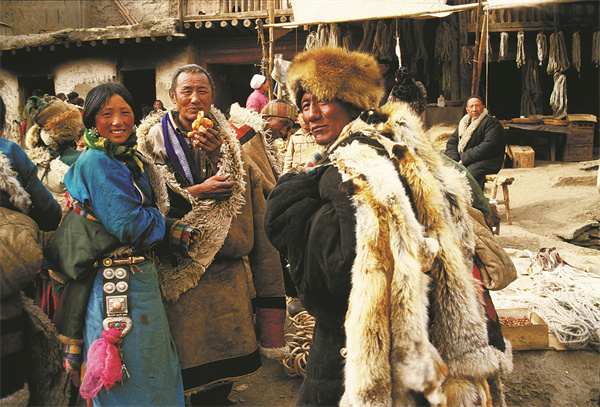

"I used a car reflector to project the outdoor light into the room, and then projected the indoor light onto the murals," he recalls. "The resulting images under the two projected light sources were softer and had no light reflection. By opening the camera aperture to the maximum, the murals were captured clearly."
One of Zhang's most unforgettable experiences was his odyssey to photograph Lake Namtso with a few of his friends in 1986, his second visit to Tibet.
"We were lucky to witness the unique geographical wonder of the Namtso glaciers," Zhang says.
The lake surface was frozen into a thick layer of ice during the winter months, and began to melt around May.
"The melting ice chunks were pushed toward the shore by the tide, gradually forming ice mountains that stand several meters high," he recalls.
At the moment they were tempted to climb onto one of the edifices to capture the stunning view from a different perspective, the ice suddenly made a loud cracking sound. "Without warning, some of the ice beneath us gave way and collapsed into the lake below," he says.
After Zhang came back to his senses, he realized the fracture zone was just a few meters behind him. "It was a really close call," he says.
When they finished the photo shoot, the car that was supposed to pick them up didn't show up as scheduled. "Mobile phones were not available then, and we ran out of food supplies," he says.
Fortunately, they met local Tibetans who turned out to be good Samaritans. "They generously shared with us their dried meat and tsamba (flour made from parched ground barley or wheat)," he says.